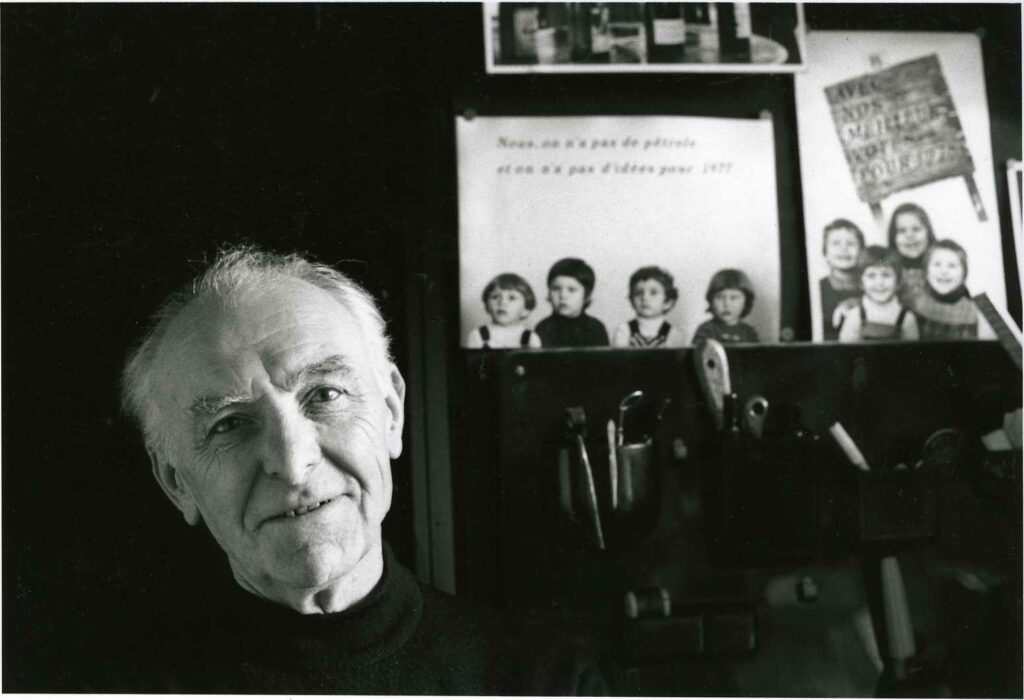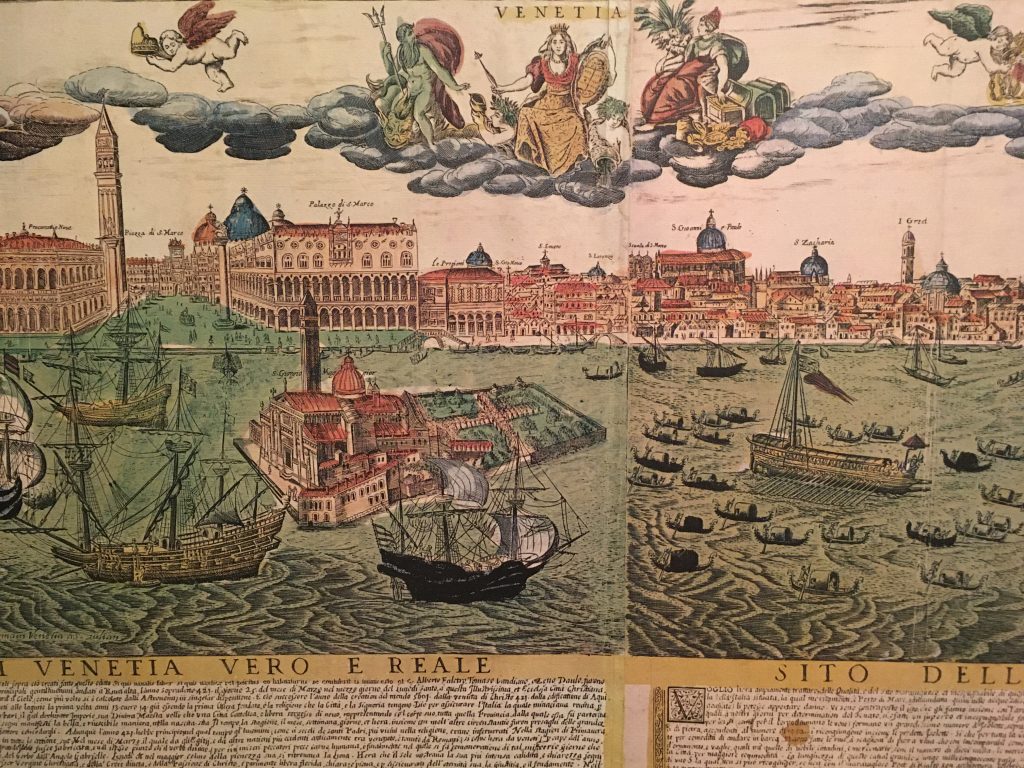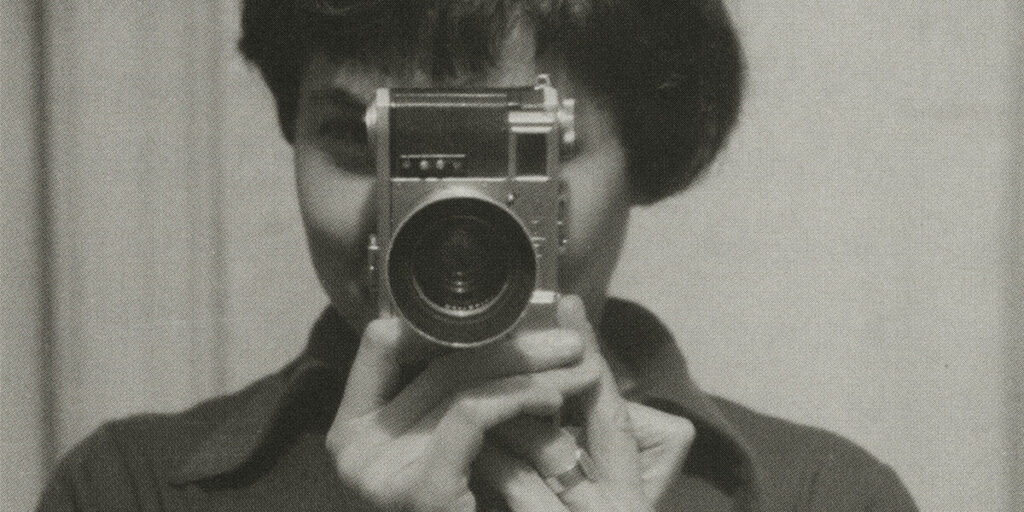The best way to understand an artist one does not know is to try to identify their patterns. Repetitions, recurring images and themes, mannerisms – his modus operandi, if you will; and exhibitions, when curated properly, precisely fulfill this task: they clearly outline the pattern, what pursues the artist-or artists in a movement.
If you pay enough attention, however, you can spot additional hidden patterns. Showing up at an exhibition not very prepared but equipped with a critical attitude and a good amount of curiosity has its advantages: it can be a good way to explore different visions, games, connections.
From Nov. 15, 2023 to Feb. 14, 2024, the Palazzo della Gran Guardia in Verona hosts the Robert Doisneau exhibition; the exhibition space gathers only a small – though significant – part of the works of the great photographer of the French humanist school.
The exhibition follows Robert Doisneau over the course of his long career: it conveys and displays the highlights of his life and activity, defining very clear and well-structured sections on periods, themes, and major figures. His years in the Renault workshops, his magazine engagements (including Life and Vogue), his employment at the Rapho agency (at which he would work until the end) are not missing. His countless subjects are paraded: concierges, children, passersby, the unconventional, workers.
Not only photos, but also documentaries and interviews help bring out Doisneau’s sense of humor and mannerisms: there is everything the visitor needs to delve into the world of the French photographer.
That said, it will be clear why one segment of the exhibition, in particular, manages to stick: namely, his artist portraits.
Picasso appears frowning. Picasso’s breads are playful, lending themselves as the artist’s “hands” while recalling the forms of his art, as well as bringing a certain amount of eccentricity to the composition. The feeling of entering one of his still lifes is accentuated by the bottle and glasses resting on the table.
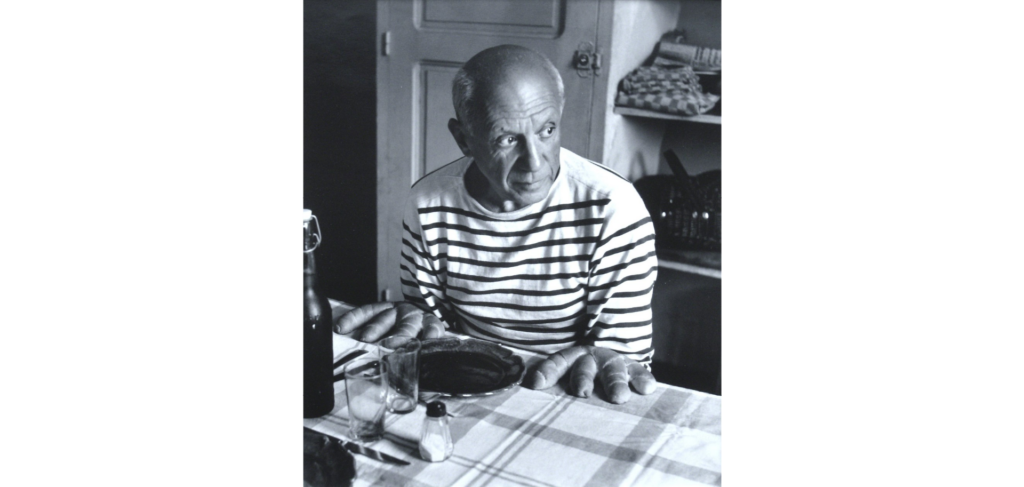
With Giacometti in His Studio, on the other hand, the viewer has the impression of leaning like a giant from above; the feeling is one of spying on him not only inside his studio, but even in a more intimate way still, inside his head. The artist himself appears puzzled to be in that position. The game with heights does not go unnoticed; the statue seems to pierce the picture.
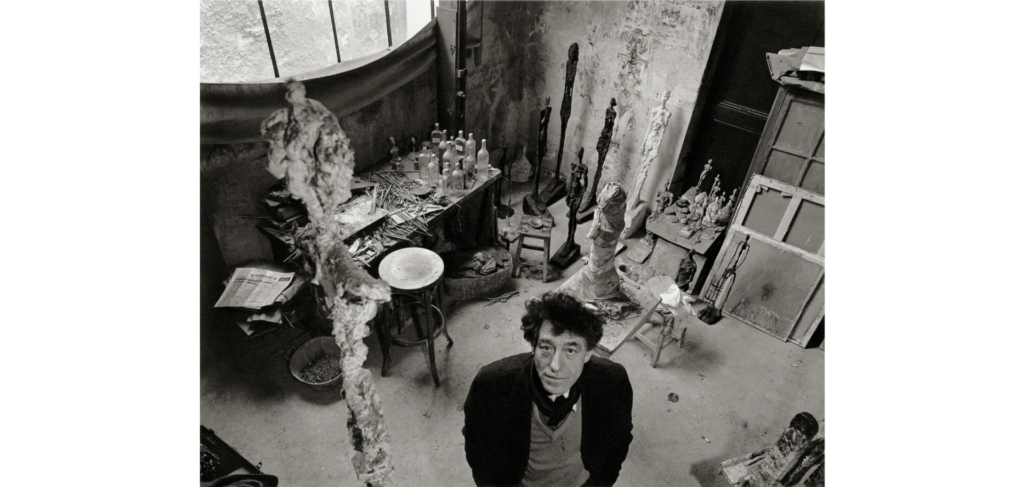
Fernand Léger among His Paintings. Doisneau plays here instead by applying a principle of mimesis of the painter: the eye struggles to track him down and has to make him actively emerge between two canvases, so camouflaged is he among the crowd that populates his paintings. His expression carries with it a certain amount of astonishment, as if wondering: how did I end up here?
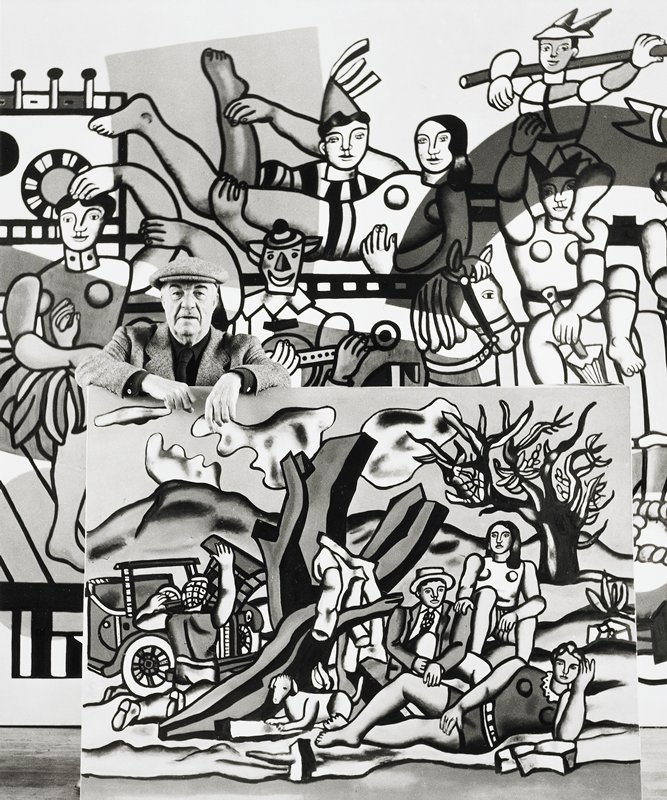
If you pay enough attention you can spot hidden patterns.
This is not the section of his works best known or central to his production. By Doisneau are others, the most recognized patterns: others are the patterns that are most talked about, others are the stories told in his photos. We do not find here his beloved “theater of the street,” the clubs he frequents and the various kinds of people he is privileged to capture on film.
The subject posing here is of a completely different nature. A very different complicity and understanding is created between artist and photographer than in previous contexts: Picasso, Giacometti, and Léger appear cast in their own worlds, with their own artistic language of origin, inserting themselves into the humorous game so appreciated by Doisneau.
The result are photographs of no banality, playful, highly original – perfectly balanced between the two artistic languages.
Cover image:
Robert Doisneau photographed by Bracha L. Ettinger in his studio in Montrouge, 1992.
All uses of this picture are to be attribute it to Bracha L. Ettinger.
For further details:
https://www.youtube.com/watch?v=ayrvtWahJfE
Curated by Nicolas Ballario. A Silvana Editoriale production.

